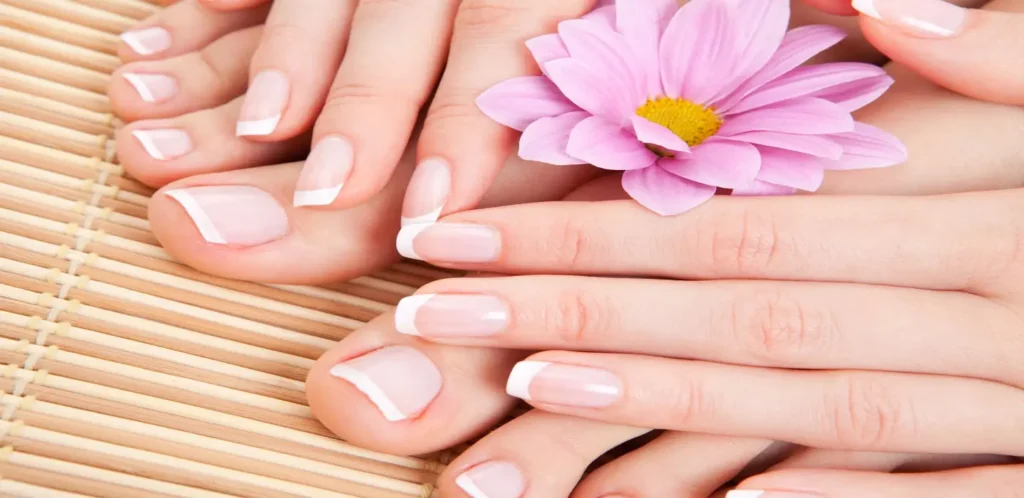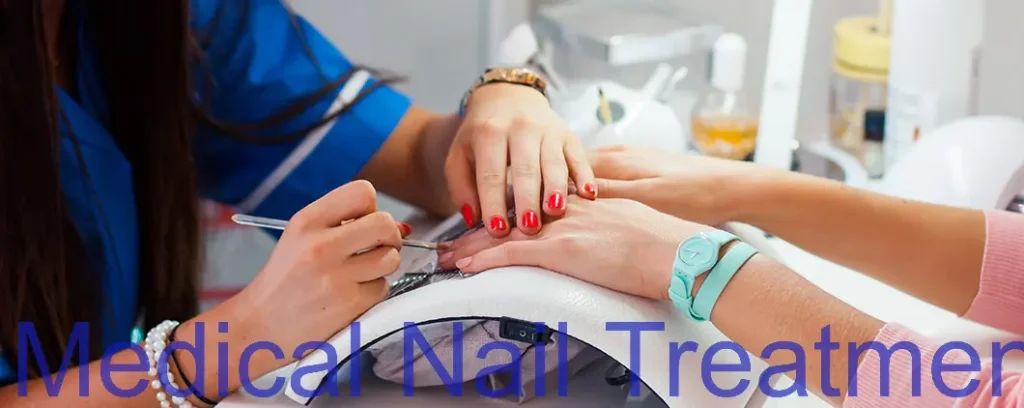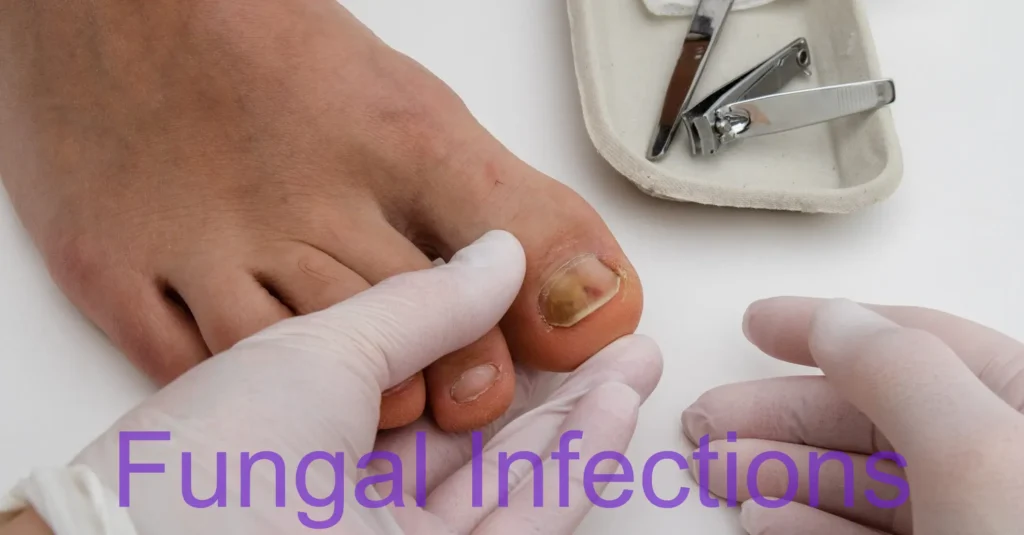Your nails need proper care to stay strong and look good. Many people ignore their nails until problems start. Good nail treatment helps prevent issues before they happen. It also fixes problems that already exist.
Healthy nails make your hands look better. They also protect your fingertips from injury. Poor nail care leads to breaks, infections, and pain. The right nail treatment keeps your nails in top shape.
What Are Nails Made Of

Nails grow from living tissue under your skin. They contain a protein called keratin. This is the same stuff in your hair. The nail you see is actually dead tissue. But the root underneath is very much alive.
Parts of Your Nail
Each nail has several important parts:
- Nail plate – the hard part you can see
- Nail bed – skin under the nail plate
- Cuticle – skin around the nail edges
- Nail root – where new nail cells form
- White part – the curved area at the nail base
- Side folds – skin on both sides of the nail
Common Nail Problems
Many things can go wrong with nails. Some problems need quick nail treatment:
- Weak nails that break easily
- Yellow nails from fungus or staining
- Ingrown nails that hurt and get infected
- Ridges that make nails look bumpy
- Hangnails that catch on things
- Splitting that gets worse over time
- Thick nails that are hard to cut
Professional Nail Treatment Services
Nail salons offer many types of nail treatment. Trained workers know how to fix problems safely. They have special tools and products you cannot buy in stores.
Salon Treatments

Professional nail treatment includes many services:
- Deep moisturizing that makes nails stronger
- Cuticle care done without causing damage
- Nail repair for breaks and cracks
- Hand massage that improves blood flow
- Polish removal without harsh scraping
- Shape correction using proper techniques
- Problem diagnosis by experienced workers
Medical Nail Treatment

Doctors treat serious nail problems. They can prescribe strong medicines. Some conditions need medical nail treatment:
- Fungal infections that spread or return
- Ingrown nails that keep getting infected
- Nail injuries from accidents
- Skin diseases that affect nails
- Bacterial infections around nails
- Growth problems that do not improve
- Pain that interferes with daily life
Home Nail Treatment Methods
You can do many nail treatment steps at home. This saves money and time. Home care works well for basic problems and prevention.
Daily Care Routine
Simple daily habits make a big difference:
- Wash hands with mild soap and warm water
- Dry nails completely after washing
- Use lotion on hands and nails twice daily
- Wear gloves when cleaning or gardening
- Avoid biting nails or picking at cuticles
- File gently in one direction only
- Keep nails at a comfortable length
Weekly Treatments
Once a week, spend extra time on nail treatment:
- Soak hands in warm water for 5 minutes
- Push back cuticles gently with a soft tool
- Apply oil to nails and cuticle area
- Massage hands to improve circulation
- Trim nails if they have gotten too long
- Buff surface lightly to smooth ridges
- Apply base coat to protect nails
Natural Nail Treatment Options
Many kitchen items work well for nail treatment. These are safe and cheap. Natural methods work slowly but cause no side effects.
Home Ingredients
Common household items help with nail treatment:
- Olive oil makes cuticles soft and nails flexible
- Lemon juice removes stains and brightens nails
- Honey fights germs and moisturizes skin
- Coconut oil penetrates deep into nails
- Tea tree oil kills fungus and bacteria
- Vitamin E from capsules heals damaged nails
- Warm milk softens hard cuticles
Simple Recipes
Try these easy nail treatment recipes:
- Oil soak – mix olive oil with lemon juice
- Honey wrap – spread honey on nails for 10 minutes
- Milk bath – soak fingertips in warm milk
- Salt scrub – mix salt with oil for gentle exfoliation
- Oatmeal treatment – blend oats with water for rough hands
- Avocado mask – mash avocado for deep moisturizing
Best Products for Nail Treatment
Good products make nail treatment more effective. Look for items that match your specific needs. Read labels carefully before buying.
Must-Have Items
Every nail treatment kit needs these basics:
- Nail file with medium grit for regular use
- Cuticle oil to keep skin around nails healthy
- Hand cream with vitamins and moisturizers
- Base coat to protect nails from damage
- Nail clippers that cut cleanly without tearing
- Orange stick for gentle cuticle pushing
- Buffer to smooth nail surface
Shopping Tips
Choose nail treatment products carefully:
- Read ingredients to avoid harmful chemicals
- Buy from trusted brands with good reviews
- Check expiration dates before purchasing
- Start with basics before buying expensive items
- Ask for help at beauty supply stores
- Test products on one nail first
- Replace old items that no longer work well
Treating Specific Nail Problems
Different problems need different types of nail treatment. What works for one issue may not help another. Target your treatment to your specific needs.
Fungal Infections

Nail fungus is stubborn and spreads easily. Early nail treatment works better:
- Keep feet dry and change socks daily
- Use antifungal products as directed
- Disinfect shoes and nail tools regularly
- Wear sandals in public showers and pools
- Cut nails short to remove infected areas
- See a doctor if infection spreads or worsens
- Be patient as treatment takes months
Weak and Brittle Nails
Soft nails that break need strengthening nail treatment:
- Eat protein from meat, eggs, and beans
- Take biotin supplements after talking to your doctor
- Use hardening treatments twice weekly
- Avoid harsh chemicals and acetone
- Wear gloves when doing wet work
- Moisturize often to prevent drying
- File carefully to prevent splits
Prevention Tips
Preventing problems is easier than fixing them. Good habits protect your nails from damage. Prevention is the best nail treatment of all.
Healthy Habits
These habits support strong nails:
- Eat well with plenty of vitamins and minerals
- Drink water to stay hydrated all day
- Get enough sleep for body repair time
- Exercise regularly to improve circulation
- Manage stress which can affect nail growth
- Quit smoking which reduces blood flow to nails
- Limit alcohol which depletes important nutrients
Protection Strategies
Protect your nails from damage:
- Use tools instead of nails for opening things
- Wear gloves when using chemicals or doing rough work
- Apply sunscreen to hands when outdoors
- Avoid extreme hot or cold temperatures
- Choose gentle soaps and detergents
- Dry hands thoroughly after washing
- Use cuticle oil daily to prevent tears
When to Get Professional Help
Some nail problems need expert nail treatment. Do not wait too long to get help. Early treatment prevents complications.
Warning Signs
See a professional for these symptoms:
- Severe pain that does not go away
- Pus or bleeding around nails
- Red streaks going up your finger
- Fever along with nail problems
- Nails falling off or separating from skin
- No improvement after weeks of home treatment
- Unusual colors or growth patterns
Choosing the Right Help
Different professionals offer different types of nail treatment:
- Nail technicians for cosmetic problems and regular care
- Dermatologists for skin and nail diseases
- Podiatrists for toenail and foot problems
- Family doctors for infections and injuries
- Specialists for rare or complex conditions
Daily Nail Care Schedule
A regular schedule makes nail treatment easier. Set aside time each day for basic care. Weekly treatments handle deeper needs.
Morning Routine
Start each day with simple nail treatment:
- Check nails for any new problems
- Apply hand cream after washing
- Push back cuticles gently if needed
- File any snags to prevent catching
- Put on rings carefully to avoid damage
Evening Care
End your day with nail treatment:
- Remove polish if it is chipped
- Wash hands thoroughly before bed
- Apply cuticle oil to nail area
- Massage hands for a few minutes
- Use night cream on hands and nails
Seasonal Nail Treatment
Different seasons bring different challenges for nails. Adjust your nail treatment routine as weather changes.
Winter Care
Cold weather makes nails brittle:
- Moisturize more often in dry indoor air
- Wear gloves outside and when cleaning
- Use a humidifier to add moisture to air
- Apply oil treatments more frequently
- Avoid hot water which dries out nails
- Eat warming foods rich in vitamins
Summer Protection
Heat and sun can damage nails:
- Use sunscreen on hands and nails
- Stay hydrated by drinking more water
- Protect from chlorine in pools
- Rinse after swimming in salt water
- Keep nails shorter for active summer days
- Choose breathable nail polish when possible
Nail Treatment Mistakes to Avoid
Common mistakes can make nail problems worse. Learn what not to do. Avoiding these errors improves your nail treatment results.
Harmful Practices
Stop doing these things that hurt nails:
- Biting nails introduces germs and causes damage
- Using nails as tools leads to breaks and injuries
- Cutting cuticles creates wounds that can get infected
- Sharing nail tools spreads germs between people
- Ignoring problems allows small issues to become big ones
- Over-filing weakens nails and causes splits
- Picking at hangnails makes them worse and more painful
Product Mistakes
Use nail treatment products correctly:
- Reading directions prevents overuse and damage
- Testing first on one nail prevents bad reactions
- Storing properly keeps products effective longer
- Replacing regularly ensures products still work
- Mixing carefully if combining different treatments
- Timing applications according to product instructions
Building Your Nail Treatment Routine
Creating a routine makes nail care automatic. Start small and add more steps gradually. Consistency matters more than perfection.
Beginner Steps
New to nail treatment? Start here:
- Clean nails daily with soap and water
- Apply lotion to hands twice daily
- File nails once weekly in one direction
- Push cuticles back gently after showering
- Trim nails when they get too long
- Wear gloves for household chores
Advanced Care
Ready for more intensive nail treatment:
- Weekly oil treatments for deep conditioning
- Monthly professional manicures or pedicures
- Seasonal routine changes for weather
- Problem-specific treatments as needed
- Supplement support with doctor approval
- Regular checkups with nail professionals
CONCLUSION
Your nails reflect your overall health and self-care habits. Good nail treatment keeps them strong, healthy, and attractive. Start with simple steps and build your routine over time. Consistent care prevents most problems before they start. When issues do arise, early nail treatment works best. Take care of your nails, and they will serve you well for years to come.






